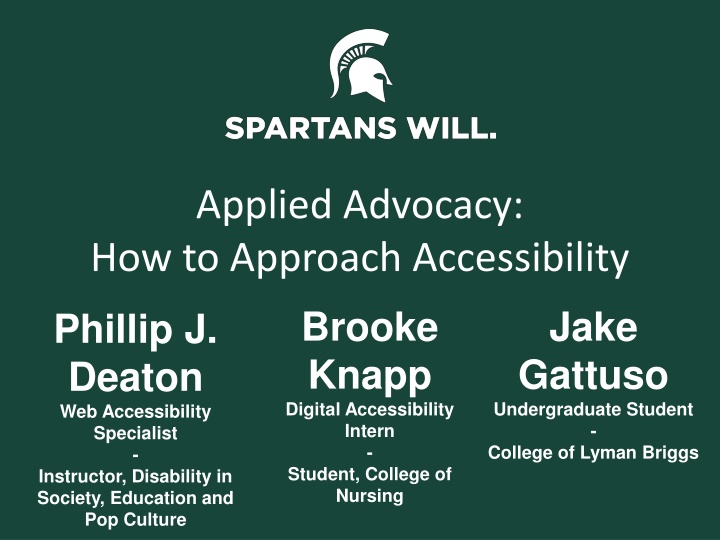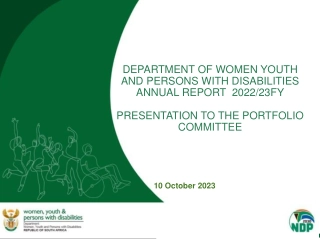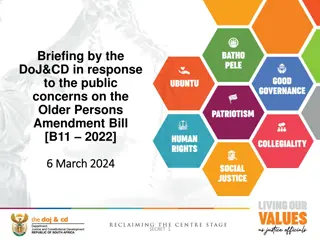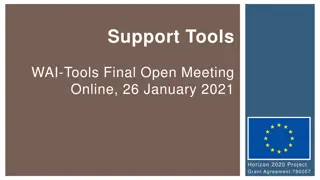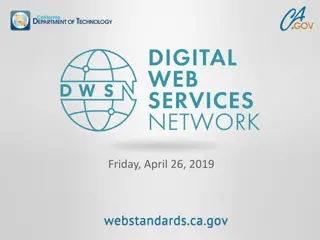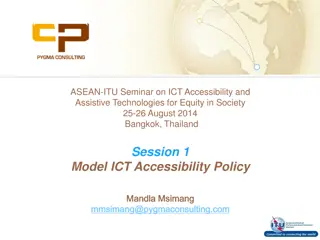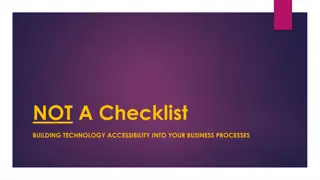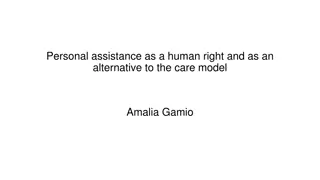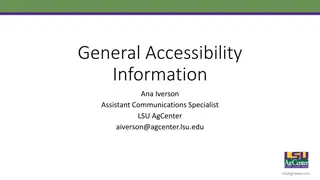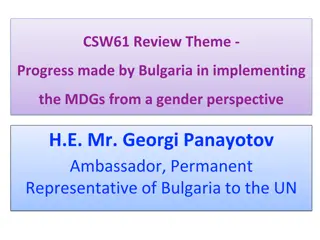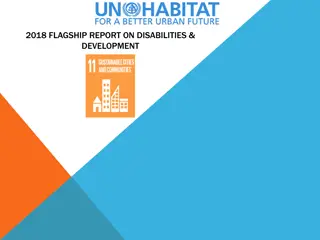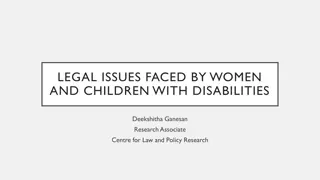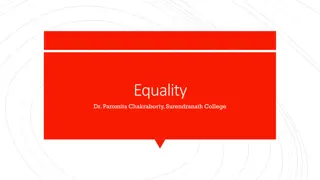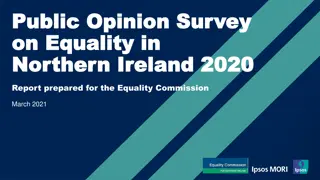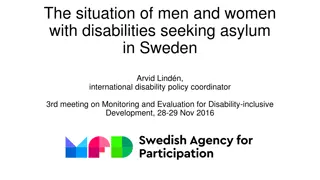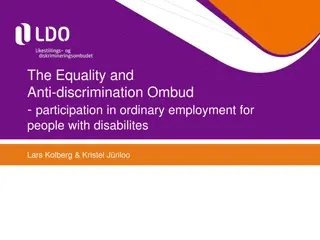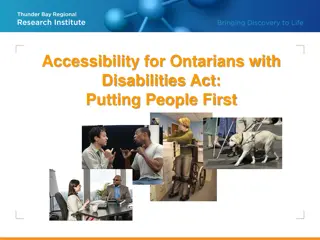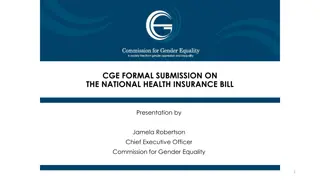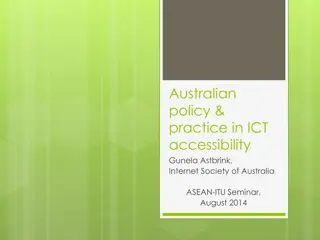Approaching Accessibility: A Path to Equality for Persons with Disabilities
Addressing principles of disability and cultural change, this content discusses legal aspects, vocabulary, process changes, and the current landscape for promoting accessibility in society. Advocacy efforts, both reactive and proactive, are highlighted to ensure equal access and opportunities for individuals with disabilities.
Download Presentation

Please find below an Image/Link to download the presentation.
The content on the website is provided AS IS for your information and personal use only. It may not be sold, licensed, or shared on other websites without obtaining consent from the author.If you encounter any issues during the download, it is possible that the publisher has removed the file from their server.
You are allowed to download the files provided on this website for personal or commercial use, subject to the condition that they are used lawfully. All files are the property of their respective owners.
The content on the website is provided AS IS for your information and personal use only. It may not be sold, licensed, or shared on other websites without obtaining consent from the author.
E N D
Presentation Transcript
Applied Advocacy: How to Approach Accessibility Brooke Knapp Digital Accessibility Intern - Student, College of Nursing Jake Gattuso Undergraduate Student - College of Lyman Briggs Phillip J. Deaton Web Accessibility Specialist - Instructor, Disability in Society, Education and Pop Culture
Legal and Social Aspects Section 504 1973. Statute preventing discrimination of persons with disabilities ADA 1990. Ensures equal access and opportunity Issues in Society Spark desire for change Legal Change Determines social change
Vocabulary: Principles of Disability Disability: A condition that limits daily life Impairment: A disability of a specific kind Accessibility: Aim to make means of entry (digital/physical) more easily facilitated Inclusion: Process of encompassing a wider range in the diversity of people
Cultural Change 1 in 4 people in the United States has a disability Impairment vs. Disability Thinking on a broader scale Policy vs. Persons Advocacy on an individual basis Reactive vs. Proactive Intentional design https://commons.wikimedia.org/wiki/File:ISAT-CS_Building_stairs.jpg
Process Change Everyone who conducts scholarship needs to understand access Conducting can be creating or communicating the creation of scholarship Top-down Bringaccess into institutional conversation on diversity Listen to students and persons with disabilities Think about scholarly accountability Conduct scholarship and fund scholarship in the areas of disability Bottom-up Keep having conversations on disability and diversity Don t be afraid to work with others to help them understand accessibility Do research that benefits persons with disabilities Do accessibility, always, but prioritize
Current Landscape for change Individuals (students and staff and faculty) are working on accessibility MSU has teams focused on accessibility, like DCAT, like RCPD Remediation Consultation Presentation For processes to change, laws and regulations have to coincide with disability principles and have to positively impact culture surrounding disability issues Global landscape - UN CRPD, Web Accessibility Initiative (WAI)
Applied Advocacy Applied advocacy focuses on systems change individual to individual interaction collaboration impact the experiences of individuals, communities, and systems now. Strategic: Connect with others initiatives. Tactical: Provide steps to move forward. Tactful: Win hearts, then minds.
Advocacy Lexicon Change: To make different. Access: To enter into, participate in, and engage with. Conducting: To organize, administer, coordinate, or create knowledge through scholarly activities. Scholarly Accountability: An intrinsic and extrinsic rule of research (expounded on through the Belmont Report and others) that states that all research should be for the benefit of humankind. Applied Advocacy: Championing causes that benefit humankind in ways that inspire, engage, explain, and actuate.
Contact Phillip J. Deaton Web Accessibility Specialist & Instructor deatonph@msu.edu Brooke Knapp Digital Accessibility Intern & Student knappbro@msu.edu Jake Gattuso Student gattusoj@msu.edu
